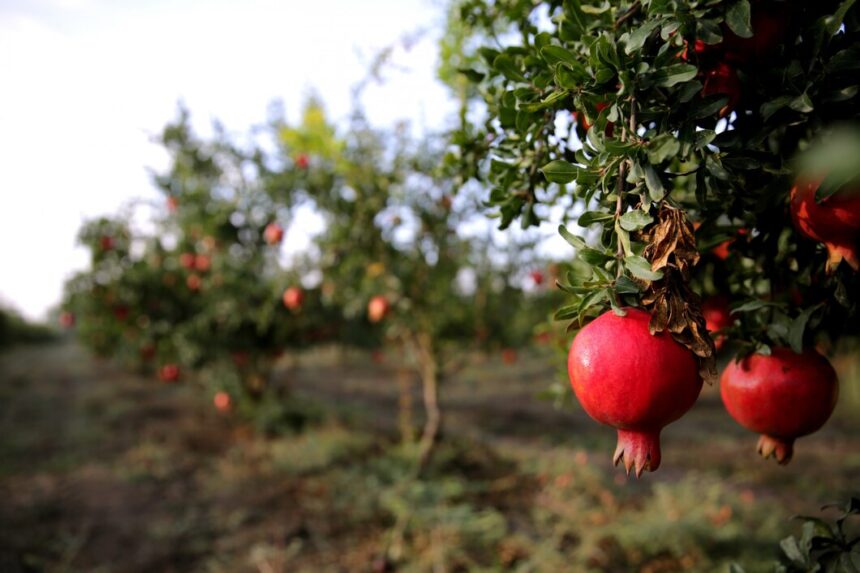Pomegranates are a delightful fruit, renowned for their vibrant color and sweet-tart flavor. However, they can be susceptible to various diseases, one of which is heart rot. This condition can significantly impact fruit quality and yield if not addressed promptly. Here are ten early signs that your pomegranates may be suffering from heart rot:
- Discoloration of the Flesh: One of the initial signs of heart rot is a change in the color of the pomegranate’s flesh. It may develop a brown or darkened hue, which contrasts sharply with the usual vibrant red or pink interior.
- Soft or Mushy Texture: The flesh inside the pomegranate can become unusually soft or mushy. This is often a result of the rot breaking down the fruit’s internal structure, making it feel squishy to the touch.
- Unpleasant Odor: A sour or unpleasant smell emanating from the fruit is another indicator of heart rot. This odor is a result of the decay and microbial activity within the fruit.
- Sunken Areas: Look for sunken or depressed areas on the fruit’s surface. These depressions are often where the rot is beginning to take hold, causing the skin to collapse inward.
- Visible Mold or Fungal Growth: Mold or fungal growth may be present on the surface or inside the fruit. This can appear as white, gray, or greenish patches and is a clear sign of a problem.
- Premature Splitting: Pomegranates with heart rot may split open prematurely. The rot weakens the fruit, causing it to crack and break open before it reaches full maturity.
- Reduced Juice Content: If you notice a decrease in the amount of juice or the juice is not as rich and flavorful, it could be due to heart rot affecting the fruit’s internal quality.
- Discolored Seeds: The seeds, or arils, inside the pomegranate may also show signs of discoloration. They may appear brown or discolored rather than their usual bright red.
- Decreased Firmness: Healthy pomegranates should have a firm texture. If the fruit feels unusually soft or mushy when gently squeezed, it could be a sign of heart rot.
- Leaf and Stem Symptoms: Sometimes, the symptoms of heart rot can extend to the plant itself. Look for wilting leaves or a decaying stem, as these can indicate that the plant is struggling, which may affect the fruit.
Preventing Heart Rot
To prevent heart rot, ensure proper cultivation practices:
- Adequate Drainage: Ensure that the soil has good drainage to prevent waterlogging, which can contribute to rot.
- Avoid Overwatering: Water the plants as needed but avoid overwatering, which can promote fungal growth.
- Regular Inspection: Regularly inspect your pomegranate trees for early signs of disease and address issues promptly.
By recognizing these early signs and taking preventive measures, you can help ensure that your pomegranates remain healthy and delicious.
Join 'Farmers Mag' WhatsApp Channel
Get the latest Farming news and tips delivered straight to your WhatsApp
CLICK HERE TO JOIN






